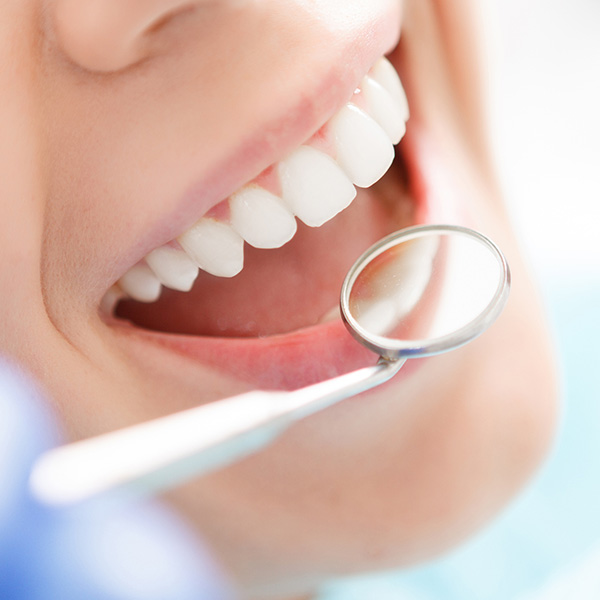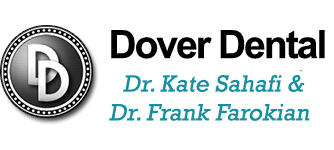Diabetes & Dental Health
Diabetes and Dental Health
Prevention beats problems every time especially if you have diabetes, the disease that harms your eyes, nerves, kidneys, heart, and other important systems in the body. Your mouth is not immune to the effects of diabetes, either.

It’s a “Catch-22”
Glucose control, please. Poor control? Expect poor teeth and gums. Poor teeth and gums? Expect poor control. That’s the way it is. If you have poor sugar control, you have a greater chance of getting periodontitis, and odds are that it will be worse if you are diabetic. This means periodontitis is harder to treat and you’ll lose more teeth. Diabetics with well-controlled blood sugar have no greater chance of periodontal disease than people without diabetes. And this includes those with type 1.
The tough thing about periodontitis (chronic infection of any area around the tooth) is the inflammation is often hidden from view. That’s one of the things that make it a significant problem, because when advanced, it causes painful chewing, bone loss, and loosened and weak teeth, allowing them to decay and require removal.
Here’s why:
- Blood vessel changes – When diabetic blood vessels thicken, the flow of oxygen and nutrients to the gums is reduced. The reduced flow also slows the clearing of waste products. The combination weakens the resistance of gum tissue and bone structure to infection.
- Bacteria – Elevated blood sugar is associated with higher sugar content in the saliva in your mouth. This increased “sweetness” helps bacteria grow, overpower the resistance to infection, and cause gum and bone disease.
- Smoking – The plain facts about smoking and gum disease are:
- Smokers are five times more likely than nonsmokers to have gum disease.
- Diabetic smokers, age 45 or older, are 20 times more likely to get severe gum disease.
Gingivitis
Improper dental hygiene, the fancy term for poor brushing and flossing habits, causes a buildup of plaque on your teeth. Plaque is the sticky, whitish-yellow film of germs and broken-down food particles you’ll first notice between your teeth and along the gum line below your teeth. When germs are held in the area by the plaque, they grow between the tooth and gum, causing redness, swelling, pain, and occasional bleeding around your teeth when you brush or floss. This gum inflammation is gingivitis, the first stage of periodontal disease.
Daily brushing and flossing, along with regular cleaning by the dentist, can usually reverse gingivitis, and prevent its return. Gingivitis can develop into the more serious gum disease, periodontitis, if you continue poor oral hygiene techniques.

Periodontitis
The longer plaque remains in place, the thicker and harder it gets. Eventually, a hard substance called scale forms under the gums. Scale separates the gums from your tooth, forming a pocket between the two. The pocket becomes a site of infection unless cleaned out early. If not, the infection eats away the bone socket, weakens the tooth, and may result in the tooth having to be removed, or breaking or falling out while chewing. Obviously, waiting until you feel pain or develop an abscess is too late for regular brushing and flossing. Periodontitis requires treatment by a gum specialist called a periodontist or a dentist with special training in treating gum diseases.
Plaque or Scale Removal
Whatever stage of periodontitis has affected your mouth, if you want to keep your own teeth, the plaque or scale must be removed. If you’ve got an early stage of plaque, your dental hygienist, dentist, or periodontist will use deep cleaning to remove hardened plaque and infected tissue under the gum and smooth the damaged root surfaces of teeth. This cleaning and smoothing can allow the gum to re-attach to the teeth. Sometimes, your dentist will tell you to use a special mouthwash or take an antibiotic to help control the infection. To keep plaque from returning, brush and floss regularly.

Periodontal Surgery
When periodontitis has advanced to the point of destroying too much tissue, the dentist or periodontist cleans out the infected pocket and reshapes or replaces the damaged tooth-supporting tissues.
As a diabetic:
- Know your degree of diabetic control and tell your dentist each visit.
- If you need treatment for periodontal disease, ask your diabetes doctor to talk to the dentist or periodontist about your overall medical condition.
- Pay attention to your meal schedule and the timing and dosage of your insulin if oral surgery is planned. You may have to fast prior to surgery.
- Acute infections, such as abscesses, are considered an emergency and should be treated right away, regardless of glucose control difficulties. An abscess may be why control is poor.
- Postpone non-emergency dental procedures if your blood sugar is not in good control.
- Because of diabetes, healing may take more time.
- Once the periodontal infection is successfully treated, it is often easier to control blood sugar.
Other Oral Problems Linked to Diabetes
- Dental Cavities: Diabetics who are careful with their diets and blood glucose control tend to have no more frequent cavities than people without the condition.
- Thrush: Also called oral Candidiasis, this is a fungus infection caused by the overgrowth of Candida albicans, a yeast fungus that thrives on high glucose levels in saliva. Two behaviors that contribute to the overgrowth are smoking and wearing dentures (especially all the time). Exercising tight glucose control, not smoking, and if you wear dentures, and daily removal and cleaning can help prevent thrush.
- Dry Mouth: Often one of the symptoms of undetected diabetes, it’s not just an uncomfortable feeling. Soreness, ulcers, infections, and tooth decay are more common occurrences because of having little or no saliva to lubricate the mouth and help remove bacteria and food buildup that causes plaque and tooth decay. A dry mouth is frequently a side effect of medication. More than 400 over-the-counter and prescription drugs cause dryness of the mouth. These medications include ones for colds, high blood pressure, and depression. These also happen to be some of the most widely used and prescribed medications. Let your health practitioner or dentist know if you feel your mouth is too dry. Perhaps a different drug or using “artificial saliva” will help keep your mouth moist and protect your teeth.
Work Hard to Keep Your Teeth
The ongoing serious periodontal disease costs more than losing your teeth. Any tooth loss causes changes in the shape of your gums and jawbone, interferes with the proper fitting of dentures, and causes painful irritation. Persistent irritation leads to pain, ulcers, and infections. Painful chewing when eating certain foods will make you select different, easier chew foods, which might affect your blood sugar control. Isn’t it best to avoid these problems by keeping your natural teeth and gums healthy?
Tips to Protect Your Teeth and Gums
Brushing
The single most successful way to keep your natural teeth is to brush them twice a day and use dental floss either before or after you brush. Here’s how:
- Use a fluoride toothpaste to protect teeth from decay.
- Gently brush teeth with a SOFT nylon brush with rounded ends on the bristles.
- Use small circle motions and short back-and-forth motions.
- Avoid hard back-and-forth scrubbing.
- Gently brush your tongue.
- Rinse your mouth with water.
- Avoid using mouthwash that contains sugar or alcohol. Make sure to read the label if you’re not certain.
Flossing
Removing food particles from between your teeth, even after you brush, can be done by:
- Using a piece of dental floss about 18 inches long.
- Wrap an end of the floss around the first finger of each hand, leaving a short segment between your fingers.
- Using a back-and-forth sawing motion, gently bring the floss through the tight spaces between your teeth.
- Do not snap the floss down the tooth against the gums.
- Curve the floss around each tooth and gently scrape from below the gum to the top of the tooth several times.
- Carefully unwrap the floss from either finger and gently pull it through the space between the teeth to avoid pulling it up and snapping off dental work such as caps, crowns, or fillings.
- Rewrap the free end around your finger, and move to the next space. Repeat the process throughout your mouth.
- Rinse your mouth after flossing.
Checking Yourself
Plaque (whitish build-up along the base of the teeth) is hard to see unless it is old and stained. At that point, it’s a hard deposit, or crust called “scale”, and should be removed by your dentist or dental hygienist. Plaque can easily be seen after you chew a red “disclosing tablet” available at grocery or drug stores. If you can’t find the tablets, use a cotton swab to smear green food coloring along the base of your teeth. The plaque will show up bright green. Extra flossing and brushing will remove the now green plaque.

Checking in With Your Dentist
Anyone, including people with diabetes, should have their teeth checked at least every six months, or more frequently as your dentist advises.
- If you have any problem with your teeth, gums, jaw, or mouth, don’t wait for your next appointment. Make sure to see your dentist.
- Remind your dentist at each visit that you have diabetes.
- If you change your dentist, make sure to let your new dentist know you have diabetes.
- Frequent dental check-ups will find problems early when treatment is most effective.
